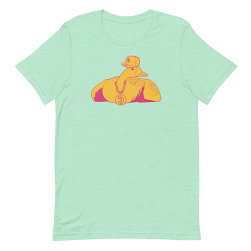A rare herd of Spanish-descended wild horses roams free across San Diego County's rural backcountry, tracing their lineage back to California's earliest colonial history.
The Coyote Canyon Heritage Horse Herd (CCHHH) has had DNA testing that revealed that these horses descend from the animals brought by Spanish military expeditions in the mid-1700s, notably led by explorers like Juan Bautista de Anza. They symbolize a living piece of early California history, tied to both Spanish colonial missions and indigenous encounters.
In 1769, the first mission in San Diego began providing Spanish bloodstock horses to local ranches and nearby Native American communities. For over two centuries, these horses played a vital role, serving on missions, ranches, and settlements until various federal actions and geographic pressures drove the herd from the region, with most migrating to Utah.
The Coyote Canyon Heritage Horse Herd (CCHHH) has had DNA testing that revealed that these horses descend from the animals brought by Spanish military expeditions in the mid-1700s, notably led by explorers like Juan Bautista de Anza. They symbolize a living piece of early California history, tied to both Spanish colonial missions and indigenous encounters.
In 1769, the first mission in San Diego began providing Spanish bloodstock horses to local ranches and nearby Native American communities. For over two centuries, these horses played a vital role, serving on missions, ranches, and settlements until various federal actions and geographic pressures drove the herd from the region, with most migrating to Utah.
Initially, some of these horses were herded into Coyote Canyon near the Anza-Borrego Desert, a remote area where they remained relatively undisturbed until the 1970s. The Bureau of Land Management (BLM) eventually deemed them "feral" and, due to environmental concerns, relocated the herd from the area. By 2003, the last 29 horses were rounded up, a process that led to many foal losses among pregnant mares. Four surviving stallions were rescued by local advocates, and a group of preservationists stepped in to protect these horses' legacy.
Since 2003, concerned citizens recognized the need to preserve this unique lineage and formed the Coyote Canyon Caballos d'Anza (CCCDA), a non-profit dedicated to the conservation and rewilding of these horses. This 501(c)(3) organization has focused on breeding and sustaining the herd, combining four remaining Coyote Canyon stallions with fourteen mares brought from Utah to revitalize the gene pool. This action sought to reinstate the herd's presence in its historical San Diego habitat on public lands, but the County of San Diego decided moved the herd to private property on the Ramona Wildlands Preserve.
County of San Diego Board of Supervisors has formally expressed support for federal assistance in relocating the horses to BLM land near Beauty Mountain, urging the BLM to fulfill its duties under the 1971 Free Roaming Wild Horse and Burro Act. Advocates believe the horses have a place in local history, representing a direct link to early Californian heritage. However, the BLM argues that relocation is challenging due to a lack of sufficient forage and water in proposed areas, and the proximity of developed land could lead to boundary conflicts.
As of mid-October, CCCDA issued a statement emphasizing the group's concerns regarding federal agencies' roles in limiting rewilding efforts. The CCCDA highlighted that the San Diego Multiple Species Conservation Plan was originally meant to support the CCHHH on the Ramona Wildlands Preserve, which remains suitable for this purpose. According to the CCCDA, the U.S. Fish and Wildlife Service has "sabotaged the herd to extinction in the wild and prevented their rewilding in historic native habitat consisting of over a million acres of public land." The statement also points to the Endangered Species Act as a frequent barrier to cultural preservation.
As of mid-October, CCCDA issued a statement emphasizing the group's concerns regarding federal agencies' roles in limiting rewilding efforts. The CCCDA highlighted that the San Diego Multiple Species Conservation Plan was originally meant to support the CCHHH on the Ramona Wildlands Preserve, which remains suitable for this purpose. According to the CCCDA, the U.S. Fish and Wildlife Service has "sabotaged the herd to extinction in the wild and prevented their rewilding in historic native habitat consisting of over a million acres of public land." The statement also points to the Endangered Species Act as a frequent barrier to cultural preservation.
Despite limited success with federal agencies, local advocates persist in pushing for recognition of the CCHHH as a unique heritage breed worthy of preservation and rewilding within its ancestral range in San Diego County. But for now, the heritage herd of about 20 "Caballos d'Anza" continue to roam free near Sutherland Reservoir in San Diego's Northeast County region of Ramona. Despite their "wild" classification, the horses are known for their gentle disposition and unique colors, including chestnut, red dun, and black roan.
Originally published on November 3, 2024.





















